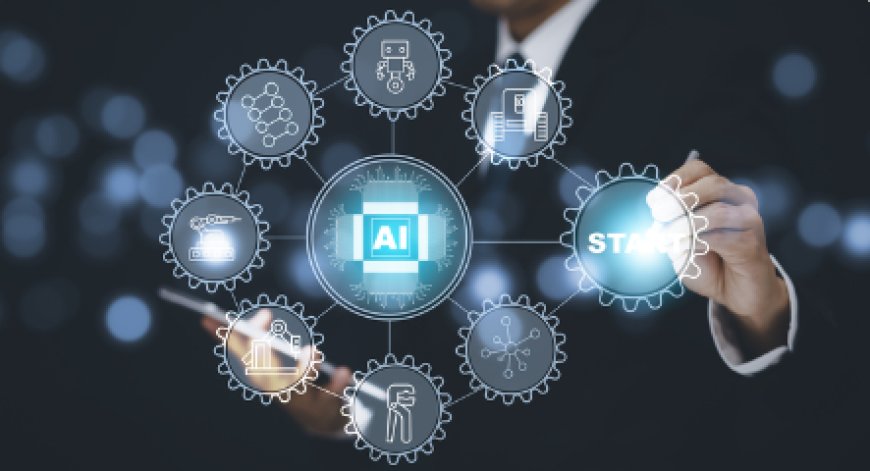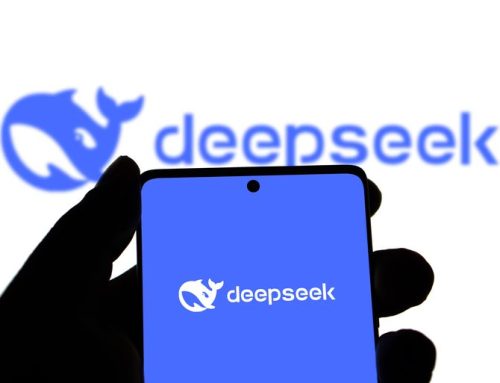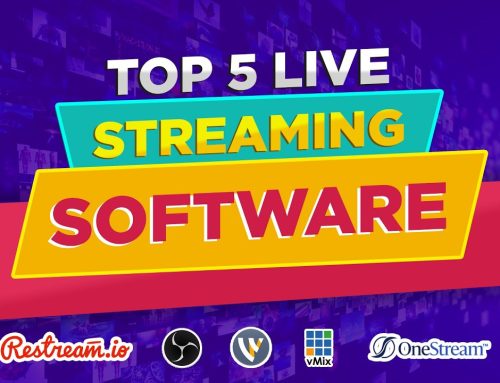Artificial intelligence (AI) is an absolutely powerful technology—one that will reshape the world and help us solve society’s toughest problems.
But it will also help with the little things—it will improve our day-to-day experience, especially in the workplace.
Whether it’s for developing the perfect marketing campaign or optimizing processes across departments, there is no shortage of AI tools that can help you take your business to the next level.
In this article, we will discuss a variety of AI tools on the market that help small business owners and managers level up their business.
What Is AI?
AI is the science of creating computer systems that can perform tasks that typically require human intelligence. These tasks encompass a wide range of activities, such as understanding human language, recognizing patterns in data, solving problems and even adapting to new situations.
Think of AI as the instruction manual that computers follow to mimic cognitive functions of the human mind. By following these instructions, machines have the power to reason, perceive their environment and, most importantly, learn from experience. AI achieves this by employing complex algorithms and mathematical models that enable computers to process information, adapt to varying circumstances and continually improve their performance.
AI is by no means new. We’ve all been using AI without really thinking about it long before we ever heard of ChatGPT. If you’ve ever asked Siri, Alexa or Cortana for something, then you’ve used AI. Remember all those times that you used Shazam to find out what song was playing? You were using AI.
Generative AI Tools
Generative AI creates text, images, video, audio and computer code based on natural language prompts submitted by users. Generative AI tools can be used for a broad set of applications across just about any department and business type and size. Everyone from lawyers, developers and actuaries to market analysts, sales representatives and HR professionals is going to be using some form of generative AI in their day-to-day work.
Chat GPT
ChatGPT is an advanced AI-powered language model developed by OpenAI. It belongs to the family of GPT (Generative Pre-Trained Transformer) models and is specifically tailored for generating natural language responses in conversational settings. Many have interacted with ChatGPT through its chat interface. However, ChatGPT can also be embedded in websites and applications via an API to enhance customer experience and worker productivity.
Just about every department in just about every organization can benefit from ChatGPT. You can deploy it as a chatbot to handle everything from customer service and support to new employee training programs. Your sales and marketing team can use it to do everything from analyzing customer sentiment in feedback and reviews and writing copy for the next campaign, to qualifying leads and recommending products to customers.
ChatGPT is easy to use but requires some time and dedication to master. But becoming a master is certainly worth the effort. There are plenty of free resources available online (this includes ChatGPT, which you can ask to help make better prompts) that can help you learn how to be a ChatGPT Prompt Master.
Competitors to ChatGPT include Bard, YouChat and HuggingChat.
DALL-E
DALL-E was developed by OpenAI, the same developers of ChatGPT. DALL-E is the result of extending the GPT architecture to the visual realm. It takes textual prompts as input and returns an image as output.
But DALL-E isn’t just an effective image creation tool—it can also be used to edit and augment existing images. You can provide DALL-E with an image and text-based instructions as input, and DALL-E will return an image based on your instructions as an output. You can also select specific areas within an image (called inpainting in the DALL-E realm), so your instructions only apply to a specific segment of the image.
DALL-E finds applications in various creative and practical domains. It can be used in graphic design to create unique and customized visuals for marketing materials, websites and artistic projects. Additionally, it has the potential to streamline content creation by generating relevant images for articles, presentations and social media posts based on textual content.
Competitors to DALL-E include Midjourney, Craiyon and Stable Diffusion (among several others).
AI for Sales and Marketing
AI can help sales and marketing spend less time on slow and mundane tasks and instead reveal valuable customer insights to drive more valuable interactions with customers.
Qualifier.ai
If identifying the right leads can feel like finding a needle in a haystack, then a tool such as Qualifier.ai is like using a highly sensitive metal detector. Instead of spending half your time searching for the right prospects, trying to track down their contact information and sending dozens of emails manually, Qualifier.ai does it for you.
The platform is very simple from the user’s perspective. Sales reps provide Qualifier.ai with the target industry, title, geographical area and company size (by head count) that you’re looking for, and Qualifier.ai will locate prospects and their contact information, and automatically send an email to the prospect. The solution even automatically follows up if a prospect doesn’t reply.
Apollo.io
Apollo.io is a data intelligence and sales engagement platform that helps businesses find and engage customers, shorten the sales cycle and enrich their existing contacts. Not every facet of the solution is AI powered. For example, one of the biggest benefits that come with Apollo.io is how it can help businesses enrich their CRM with contact data from more than 275 million verified contacts from 30 million companies across the globe.
Apollo.io can transcribe, analyze and extract valuable insights from your recorded sales conversations to ensure optimal outcomes. For example, it can provide a list of next steps, objections, pain points and action items that came up during a call. It can also be used to assess and improve your sales team’s performance during customer interactions (like if you spend too much time presenting slides), so managers can be effective coaches.
Apollo.io uses AI to automatically generate and send email messages to prospects. The platform can create templates for outreach, follow-up and last-pitch emails, and uses AI to personalize emails based on the target. You can even use the insights from the AI conversation tool to generate and send personalized follow-up emails to prospects, to keep things moving.
AI for Customer Service
AI is a natural fit for customer service. It can be trained and deployed quickly, so you don’t have to invest a lot of time and money just to get someone up to speed. It will be available 24/7/365, and won’t leave for another job in three months.
We shouldn’t expect AI to fully replace contact centers, especially in the short term. But these platforms are making their presence known and are proving to be a vital component in many contact centers.
Drift
Drift is a conversational AI that can be used for a variety of applications, such as qualifying and converting your website’s visitors into customers and helping sales reps be more productive. However, it can also be deployed as a customer support agent.
Drift absorbs your company’s knowledge base (including manuals, schematics, guides and so on), which its AI-powered chatbots use to assist customers and answer questions. It provides customers who prefer self-service with a direct route to the answers they’re looking for.
It won’t replace your existing contact center, but it’ll alleviate the load. Drift’s chatbots can focus on the problems that don’t require a human’s touch to resolve—such as finding a part number or troubleshooting a simple problem—so your contact center staff can give proper attention to needy and high-value clients or focus on solving complex problems that only a human can resolve.
NICE CXone SmartAssist Powered by Amelia
NICE CXone SmartAssist powered by Amelia provides businesses with chatbots that can interact with customers via text or voice. SmartAssist integrates with your knowledge base and backend systems and comes with baked-in roles and skills for handling common tasks, such as password resets, billing inquiries/refunds and rescheduling deliveries.
We appreciate the dynamism, as some customers are more articulate or comfortable using their voice, while others prefer text. As a result, customers can interact with the chatbot using their preferred medium, which will help lower time to resolution and increase customer satisfaction. We’re also impressed with how intuitive SmartAssist’s chatbot can be. It is able to determine customer sentiment, jump from topic to topic on the fly and react properly when interrupted.
AI for HR
AI is helping HR professionals in three major ways: it’s automating tedious tasks, unlocking insights into the employee-employer relationship and simplifying recruiting.
Leena AI
Leena AI WorkLM is a large language model (LLM) that can help HR departments automate and optimize HR service delivery and planning as well as measure and improve employee experience.
It comes with a chatbot to free HR professionals from mundane, time-consuming tasks. The chatbot can automate employee onboarding processes, answer employee queries, such as questions about company policy, and act as your HR help desk to handle time-off requests, for example. HR professionals can field surveys and lean on Leena AI to unearth and help improve the relationship with your employees.
Fetcher.ai
Fetcher.ai leverages AI to automate tedious tasks related to recruiting. Instead of scouring LinkedIn and other talent databases, recruiters tell Fletcher what they are looking for, and it returns a list of candidates. Fletcher.ai can also automatically generate and send personalized emails to worthy candidates, and recruiters can schedule when and for how long the campaign should run.
Fetcher also helps recruiters measure engagement, evaluate the performance of recruiters in your HR department and identify ways to make improvements. It can also show how many candidates opened and clicked on emails and determine which candidates are interested. Fetcher can also visualize gender and demographic data across your candidate pool to help ensure you adhere to DEI initiatives.
AI for Meetings
Sometimes meeting participants get distracted and miss something important. Other times, meetings are so fast-paced and engaging, which makes it difficult (or impossible) to take notes. And yet other times, participants aren’t able to make it to a meeting. With AI meeting tools, you don’t have to worry about information falling through the cracks.
Fireflies
Fireflies is a meeting optimization tool that uses AI to transcribe, summarize and analyze voice conversations. The solution can integrate with popular video conferencing and cloud storage platforms out of the box, but it can also be connected to other applications via its API.
Once it has ingested the conversation, Fireflies will produce a fully searchable transcript of the recording. Users can search transcripts by keywords, themes or conversation topics, specific questions asked during the meeting or based on the sentiment of the conversation. This makes it easy to review notes later.
Duet AI for Google Workspace
Duet AI for Google Workspace helps improve audio and visual quality for remote meeting participants, generates translated captions in 18 languages, takes notes and summarizes meetings, and even attends meetings on your behalf.
Duet AI in Google Meet uses AI to generate a studio look and sound for all participants. And if there are multiple people using the same webcam, Duet AI in Meet uses facial recognition to recognize each individual and display them in their own box. These features ensure that everyone can be seen and heard, despite poor camera, microphone or internet quality.
Duet AI for Google Workspace also sports some impressive productivity-enhancing features as well. It transcribes and summarizes the meeting, captures video snippets in real time and provides latecomers with a “summary so far,” which is a brief rundown of what has already been discussed. There is also an “attend for me” feature where Duet AI attends the meeting and delivers any message on your behalf and provides a recap when it’s over.
What Are the Pitfalls of AI?
The hype behind AI and the purported benefits are overshadowing the problems and pitfalls that come with using AI. While it can improve outcomes and help you achieve a lot of tasks in a short period of time, it can also pose ethical and legal concerns.
Pros
The pros of AI are the same as any other technology that you’d implement in your business: It enables you to do things better, faster and for less money. Working side by side with AI, humans can focus their attention on the tasks that require a human’s touch, while machines handle a task that a human doesn’t want to do or just possibly couldn’t do, such as identify patterns in huge data sets.
Once you train an AI to do a certain task, it will stand by until needed, 24/7/365. After all, AI doesn’t get sick, take vacation or leave you when a better offer comes along. And if processes change over time, AI will make the necessary adjustments. Also, unlike humans, AI won’t complain or resist when processes change.
Finally, AI lowers technical barriers that prevent employees from being more productive. For example, generative AI can transform novice developers into average ones, and make expert developers into godlike figures.
Cons
There are downsides to using AI—namely that AI can be wrong sometimes and there are some legal and ethical gray areas that come with using it.
AI isn’t always right, and is prone to suffer from hallucinations. An AI hallucination is when an AI application generates unexpected, incorrect outputs. Hallucinations can vary from flat-out fabrications to irrelevant and nonsensical responses. Hallucinations can be particularly dangerous, because AI is so good at sounding right, even when it’s wrong. As a result, you might make an important decision or create customer-facing messages based on falsehoods.
Using AI exposes you to the risk of copyright infringement and fallout from operational blunders. What if you unwittingly commit copyright infringement with some AI-generated content? What if your data ends up in the hands of cybercriminals or a competitor? What happens when an AI hallucination makes a six-figure mistake? These are questions that you have to consider when deciding if AI is right for a particular facet of your business.
Is AI Right for Your business?
Not every problem is going to require an AI solution. The cost of an AI plus the time and energy you have to devote to set up and learn how to use it has to be worth the benefit. If AI is going to save you five minutes a week on a task or improve accuracy by an insignificant rate, then it might not be worth the investment. But if improving accuracy by 1% can make meaningful improvements to profitability and/or saves you 10 hours a week, then it’s worth it.
You also have to factor risk into the equation. If you are using proprietary or private data with a solution such as ChatGPT, you are introducing security and compliance risks into your business that must be accounted for. Not only are you potentially exposing private data to the outside world or falling out of compliance with regulations, but you’re relegating the outcome of critical processes into technology that suffers from hallucinations, which can lead to some serious blunders.
Finally, it’s important to remember that AI is just a tool. And as with any tool, it will help with work productivity and quality. Ultimately, the quality of the results and the time it will take to get there are a function of the operator—not the AI.
In other words, iIf you’re not an HR professional, then using an AI-powered HR platform will not suddenly endow you with the ability to be an HR professional. However, if you are an HR professional, you’ll be an even better one because you have AI-powered HR tools at your disposal.
If you’re a small business owner and think that AI will suddenly handle all your HR problems, for example, then you’re in for a rude awakening. You still need to know the ins and outs of HR and how it relates to your business. However, once you do understand the in and outs (or hire someone who does), AI streamlines the work significantly.
Bottom Line
AI has transformed the working world, making previously difficult or impossible tasks easy. However, while it may seem easy to simply ask ChatGPT a few questions and have it perform a task for you, it’s important to keep in mind that AI is mostly useless when stewarded by someone who doesn’t know what they’re doing. AI is an extraordinary tool that will help you do amazing things but won’t simply serve up those amazing things without your forethought and know-how.






Leave A Comment